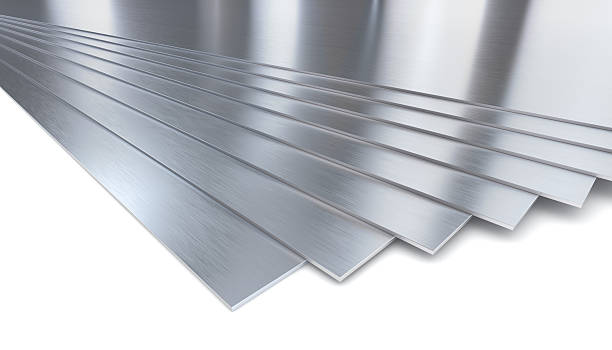Ever wonder how skyscrapers stay up or why bridges don’t shake like jelly? It often starts with a clean, perfectly cut steel plate. But cutting steel isn’t as simple as taking scissors to paper. So, here’s a question for you: What separates a good steel sheet cut from a great one? Precision. Speed. And a little bit of fire—sometimes literally.
In Singapore, where time is money and margins are tighter than a new pair of work boots, steel plate cutting is no joke. The demand for flawless steel sheet preparation spans industries—construction, shipbuilding, oil and gas. You name it. The cutting methods used here aren’t just functional; they’re strategic tools to keep projects moving, deadlines met, and safety uncompromised.
Let’s take a closer look at how this city-state cuts steel plates with surgical finesse—and yes, sometimes with lasers.
Why Cutting Steel Plate Isn’t Just About Slicing Metal
You’d think slicing a steel sheet would be straightforward. Spoiler alert: It’s not.
Cutting steel plate is all about achieving the perfect balance between precision and productivity. Do it too fast, and you risk rough edges. Go too slow, and your project drags on like a Monday morning meeting. That’s where Singapore’s approach shines. The industry here has mastered several techniques, each with its strengths (and quirks).
So how does one pick the right method for a steel sheet? It depends on three key things:
- Plate thickness
- Desired finish
- Project deadline
Let’s break them down with the flair they deserve.
Laser Cutting: Clean, Precise, and No Room for Error
Laser cutting sounds high-tech—and it is. It uses a focused beam of light (yes, actual light) to slice through a steel plate. It’s ideal when accuracy is everything. Think aerospace parts or architectural panels where even a half-millimetre off can mean disaster.
Why it works well in Singapore:
- Excellent for thinner steel sheet profiles
- Delivers smooth edges with minimal cleanup
- High precision with tight tolerances
But here’s the kicker: It’s not cheap. And it struggles with thicker steel plate materials. Also, if someone sneezes during setup… just kidding. Kind of.
Plasma Cutting: Fast, Hot, and Built for Speed
Got a thick steel plate to cut? Plasma cutting is your friend. It’s fast, effective, and best used for mid-thickness metal. This technique uses an electrical arc combined with gas to create a plasma jet that slices through steel like butter (well, hot butter).
Why Singapore contractors love it:
- Ideal for steel sheet materials 5mm and up
- Quick setup and cutting speed
- Works even on rusty or painted plates
The downside? It’s not as precise as laser cutting. So, if your project is more rough-and-tumble than picture-perfect, this may be the tool for you.
Oxy-Fuel Cutting: The Old-School Workhorse
Still used today because it just works, oxy-fuel cutting uses oxygen and fuel gas to heat the steel plate until it turns red-hot, then oxidizes it. It’s cost-effective and can tackle seriously thick metal—think steel sheet sections over 150mm thick.
You’ll see this used in heavy industry and shipyards across Singapore, where the focus is on power and penetration rather than polish.
Why it earns respect:
- Inexpensive and widely available
- Handles extreme thicknesses
- Portable and field-friendly
Drawbacks? It’s slower. And let’s just say the finish isn’t winning any beauty contests. But sometimes, all you need is muscle.
Waterjet Cutting: The Cool Kid That Uses Pressure, Not Heat
What if we told you that water could cut steel? Sounds made up, right? But waterjet cutting is very real, and very effective. It uses high-pressure water (often mixed with an abrasive) to slice through steel plate materials without generating heat.
Perfect for when heat could damage the material or when precision is key, this method is used in Singapore’s high-spec manufacturing sectors.
Waterjet advantages:
- No heat-affected zones
- Cuts virtually any material
- Precise and environmentally friendly
Cons? It’s not the fastest method. Also, you’ll need a solid budget.
CNC Cutting: When Automation Takes the Wheel
Welcome to the age of machines doing the heavy lifting. CNC (Computer Numerical Control) cutting methods apply automation to just about every technique mentioned above. Whether it’s laser, plasma, or waterjet, CNC ensures repeatability and consistency.
Why Singapore loves its robots:
- High efficiency on repetitive jobs
- Reduces human error
- Excellent for mass production of steel plate parts
The upfront investment in CNC equipment can be steep. But over time, it pays off, especially for fabricators handling a high volume of steel sheet orders.
How to Choose the Right Method Without Losing Your Mind
Feeling a bit overwhelmed? Don’t worry—you’re not alone. The steel plate cutting world can seem like alphabet soup. But choosing the right technique doesn’t have to give you a headache.
Ask yourself this:
- What’s the thickness of my steel sheet?
- Is edge quality important?
- What’s my project timeline?
From there, it’s easier to match the right cutting method with your needs. And if you’re working in Singapore, odds are you’ll find a local provider with the tools and tech to get it done right.
The Role of Skilled Operators (Because Machines Still Need Humans)
Here’s something most blogs won’t tell you: no matter how advanced the machine, it’s only as good as the person running it. A CNC plasma cutter is a beautiful thing. But without a skilled operator, you’re just making expensive sparks.
In Singapore, many companies invest in training their staff on steel plate cutting. Because let’s be honest—precision doesn’t happen by accident.
Common Mistakes That Kill Productivity (And How to Avoid Them)
Let’s have some fun (or not) with common steel sheet cutting fails:
- Using the wrong method for plate thickness
- Ignoring edge finish requirements
- Skipping machine calibration
- Underestimating material warping from heat
Avoiding these mistakes can save hours—if not days—on a project. So yes, it matters who cuts your steel and how they do it.
Final Thoughts: Clean Cuts, Clear Wins
Steel plate cutting in Singapore is equal parts science and art. From precision laser slicing to industrial-strength oxy-fuel methods, the options are as diverse as the industries that rely on them. And while the equipment is key, nothing replaces thoughtful planning and skilled hands.
So the next time you look at a neatly cut steel sheet, remember—someone chose the right method, the right speed, and probably had a cup of coffee beforehand.
Have a project coming up? Which cutting method are you leaning toward—and more importantly, why?






